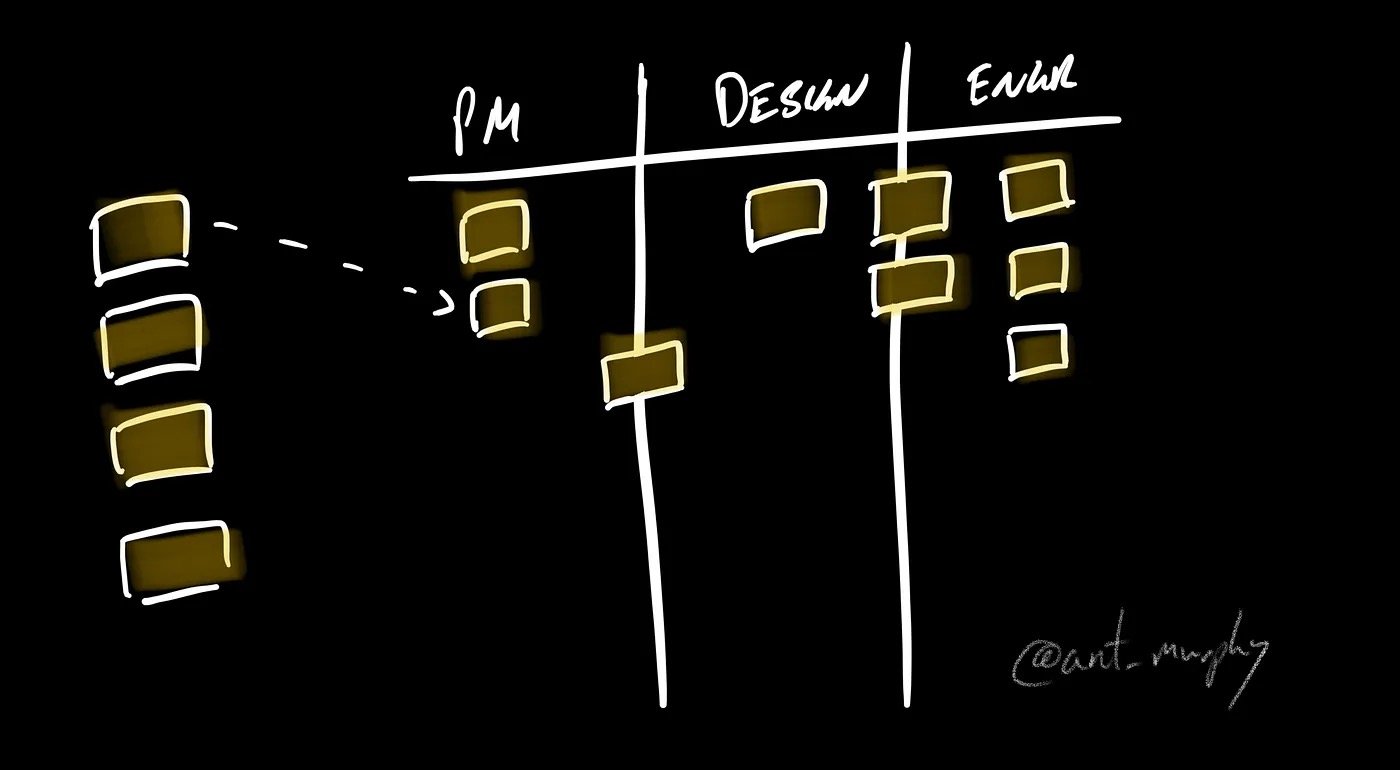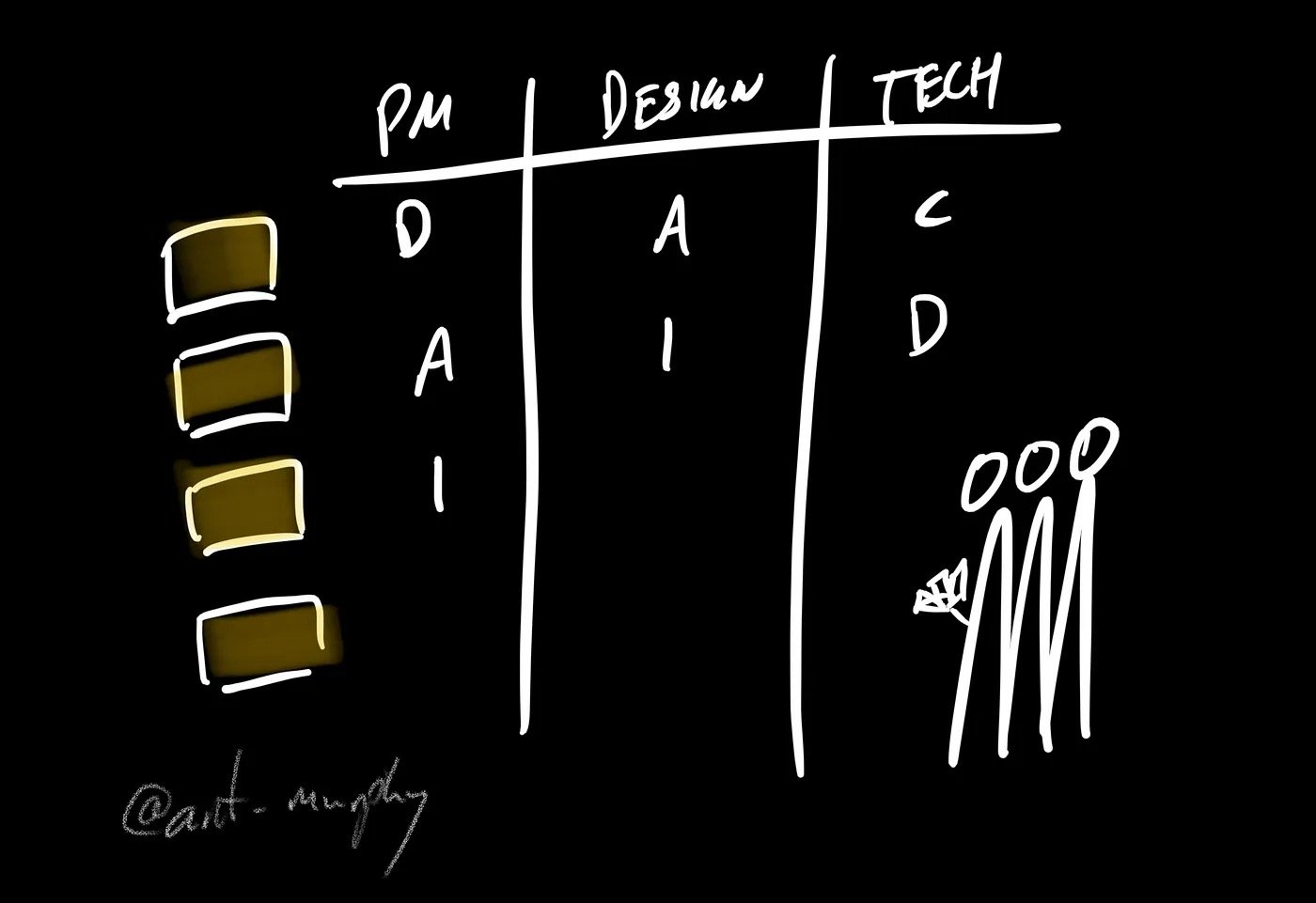4 Roles & Responsibilities Workshops to Bring Clarity to Your Team
Note: Being a Product Person examples in this article are biased towards Product Teams however these techniques can be used for any roles 🙌
As part of my job, I’m fortunate enough to see and experience many different companies and teams. I regularly see Product Managers and teams face similar problems when it comes to navigating the boundaries between different roles.
Either it’s the introduction of new roles, like Product Marketing Managers, Growth Product Managers, etc where Product Managers suddenly find themselves confused.
Or it’s due to the messy nature of Product work and working in a team causing the lines between roles to blur (which is for good reason).
However beneficial these overlaps are for collaboration too much ambiguity can cause friction.
This is where doing some kind of Roles and Responsibility type activity can benefit.
It’s important to note that the goal of these activities are not to create definitive lines between roles or completely separate accountabilities etiher. Rather their aim should be to bring clarity and reduce friction. As you’ll see my go-to exercises embrace the overlap and blurring of role-boundaries.
I’m not actually a big fan of using the term ‘Roles and Responsibilities’ for this reason — perhaps a more adept term would be ‘Role Clarity’ exercises.
So, here’s 4 different ‘Role Clarity’ workshops that I regularly use to help bring clarity to Product Teams and other Product roles, like Product Managers vs Product Marketing Managers, etc.
1) Role Expectation Matrix
This one is definitely my go-to of the four.
The Role Expectation Matrix is as the name suggests. You create a 2x2 matrix with everyone's roles along the X and Y axis. The matrix is then designed to denote the expectations from one role to another.
For example “what should a PM expect from a Designer” and “what can a Designer expect from a PM”.
How-to run a Role Expectation Matrix Workshop
Step 1: Create a 2x2 matrix with everyone's names or roles along the X and Y-axis.
Step 2: Explain the matrix and how the “to-from” expectations work.
Step 3: Silently brainstorm as a team what each team member believes the expectations from one role to another are.
Step 4: Group and discuss points of dissonance.
The goal of a Role Expectation Matrix is not to come up with clearly defined role definitions, rather it’s about clarity. It’s purposely designed to find points of dissonance around what one person expects from another and to address/align them.
2) R&Rs Venn Diagram
In the spirit of embracing the overlaps between teams an activity I like to run is to draw roles as overlapping circles (aka a venn diagram) and then brainstorm what we believe are in the overlapping ‘grey zone’ and what is more clearly in another role.
How-to run a R&R Venn Diagram Workshop
Step 1: Draw several circles each overlapping and assign different roles into each circle.
Step 2: Silently brainstorm as a team what each person believes is in a specific roles remit vs what is a shared responsibility.
Step 3: Group and discuss points of dissonance.
Similarly to the Role Expectation Matrix the goal is to find points of dissonance and create alignment. Although this workshop can be used to define more clearly separated roles it embraces the overlap and the fact that things aren’t completely black-and-white.
3) R&R Card Sort
The way an R&R Card Sort works is by first having a list of cards with Tasks/Accountabilities on them. As a team you then take turns sorting the cards under the role(s) which you believe it belongs to and discuss.
How-to run a R&R Card Sort Workshop (version 1)
Step 1: Identify a list of tasks/accountabilities — you can do this prior or you can brainstorm them together as a team.
Step 2: Create a space for each role.
Step 3: Take turns picking up a card and moving it to where you believe it should go.
Step 4: Discuss as a team, look to resolve any disagreement.
Step 5: Repeat steps 2 and 3 until there are no cards left.
How-to run a R&R Card Sort Workshop (version 2)
Step 1: Identify a list of tasks/accountabilities — you can do this prior or you can brainstorm them together as a team.
Step 2: Create multiple sets of cards so each team member has their own and spaces for each role.
Step 3: Silently place your own set of cards where you believe they should go.
Step 4: Group the cards under each role.
Step 5: Walkthrough each role and discuss and resolve any dissonance.
Thomas Gläser has this great Miro template for running this workshop in Product Teams if you need any help with getting started.
4) RACI/DACI/Delegation Poker/etc
A simple RACI (or other variant — I highly encourage creating your own like Atlassian’s DACI)
For those who don’t know RACI stands for Responsible, Accountable, Consulted, Informed. This helps break tasks down into those who are the ones doing it, approving vs those who just need to be kept informed.
However, RACI is probably the framework I use the least — I prefer either creating my own or using Delegation Poker.
But what I do like that all these have in common is having different layers.
By having different layers on a task you allow for the flexibility of not so defined roles — it’s seldom one person does everything, rather its more likely someone is “driving” and another is “navigating” and others need to be involved at other pertinent points.
Thus having a spetrcum of differing levels of involvement better highlight this.
How-to run a RACI/DACI/Delegation Poker/etc Workshop
Step 1: Identify a list of tasks/accountabilities — you can do this prior or you can brainstorm them together as a team.
Step 2: Pick up one task/accountability at a time and go around the group decide where each role will play for that task/accountabilities.
Step 3: Discuss any disagreement and align as a team.
Step 4: Repeat steps 2 and 3 until there are no tasks/accountabilities left.
📣 FYI: If you got value form this, I’m also launching an online learning platform with deep dives into specific PM topics like this over at productpathways.com.
You can see what the courses will be like over on Product Pathways YouTube channel here, where I will be posting regular videos about Product Management.
Learn product online at ProductPathways.com and free on YouTube @ProductPathways.



